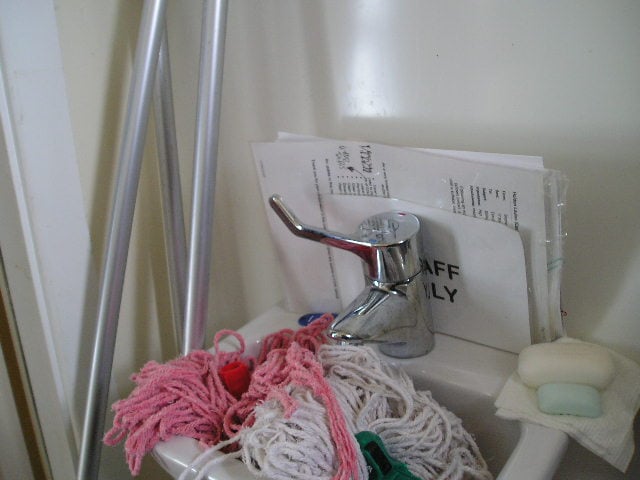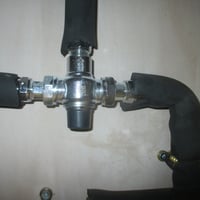
Commonly, Legionella risk assessments do not consider the risks from microbial hazards such as Pseudomonas aeruginosa (P.aeruginosa) and other waterborne pathogens.
To address this, a new Standard BS8580-2 Water quality - Part 2. Risk assessments for Pseudomonas aeruginosa and other waterborne pathogens. Code of practice has been developed, to assist with and improve public health and leisure industry risk assessments. This document follows on from HTM04-01 Part C (2016) in which Healthcare providers were asked to assess various risks, including P.aeruginosa, for their units providing augmented care - considering the likelihood and severity of hazards in the context of exposure and vulnerability of patients.
Safe management plans (or ‘Water Safety Plans’) depend on effective risk assessments (RAs), not simply reviewing whether clinical or facilities practices are acceptable, or remain in place, but crucially also whether an effective engineering assessment is completed.
The engineering aspect of this RA will review whether a water system has been correctly installed (and commissioned) following HTM04-01.
 These aspects include consideration of TMV configurations and their operation, localised pipework configurations, maintaining hot and cold supply temperatures, potential lack of use, use of inappropriate materials, backflow protection, safe access and sampling, monitoring and testing programmes and many associated issues besides. In the event, your organisation is not able to undertake the Engineering RA the Water Hygniene Centre is able to offer this service.
These aspects include consideration of TMV configurations and their operation, localised pipework configurations, maintaining hot and cold supply temperatures, potential lack of use, use of inappropriate materials, backflow protection, safe access and sampling, monitoring and testing programmes and many associated issues besides. In the event, your organisation is not able to undertake the Engineering RA the Water Hygniene Centre is able to offer this service.
Following this initial engineering review, the remainder of the BS8580-2 will involve utilising a team approach with clinical and facilities staff (in healthcare) that considers the behaviour of users, those managing systems, and any associated equipment.
Scope of the BS 8580-2
Due to the steady rise in antibiotic resistance, BS8580-2 is seen as an important tool in the fight against waterborne pathogens that have the potential to cause serious ill health in hospitals, care and other environments. It is intended to be used in conjunction with BS8580-1 (2019) and BS8680 (2020), with an approach similar to that used for a water/Legionella risk assessment but with additional considerations.
 The standard primarily deals with healthcare provision, including hospitals, care, nursing and residential care, together with other settings where water systems and associated equipment can pose a risk. Waterborne infection is responsible for a high proportion (up to 40%) of all Healthcare-associated infections (HAIs) and Pseudomonas aeruginosa remains a formidable and ever-present adversary.
The standard primarily deals with healthcare provision, including hospitals, care, nursing and residential care, together with other settings where water systems and associated equipment can pose a risk. Waterborne infection is responsible for a high proportion (up to 40%) of all Healthcare-associated infections (HAIs) and Pseudomonas aeruginosa remains a formidable and ever-present adversary.
Broadly BS8580-2 provides recommendations and guidance on how to carry out risk assessments for Pseudomonas aeruginosa and other waterborne pathogens whose natural habitat is within constructed water systems and the aqueous environment rather than those present because of a contamination event.
It additionally covers associated equipment, system components and fittings plus above-ground drainage systems. Any risk assessment should consider all relevant environmental and clinical factors as well as aspects of human behaviour.
The new standard considers additional risk factors within the associated environment leading to conditions that can encourage the colonisation and growth of waterborne pathogens and transfer of antibiotic resistance.
It additionally provides examples of risk matrices for use with risk assessment reports. These are typically rated RAG (red/amber/green) rather than numerical scoring systems. The approach in dealing with risk assessments for other waterborne pathogens is supported by Table A.1 waterborne microbiological hazards within healthcare. – identifying niche areas where other bacteria may be present or encouraged.
Who is the BS 8580-2 aimed at?
Anyone conducting water safety/Legionella risk assessments such as duty holders, members of the Water Safety Group or others involved in maintaining the safety and efficiency of a water system should read this new standard. In doing so, they will gain an improved understanding of the risk factors in areas where infection from Pseudomonas aeruginosa may be possible.
The standard is also relevant to building and design engineers and architects; providers of fittings, outlets and components for water systems; installers and commissioners; regulatory bodies; building services engineers; water treatment consultants; travel, leisure and other relevant buildings owners and operators; and those responsible for the safe management of water systems, including within leisure centres, schools, swimming pools, passenger vessels, spa pools, hot tubs etc.
The purpose of BS 8580-2
The focus of BS8580-2 is primarily on the Pseudomonas aeruginosa risk assessment process whether behavioural aspects and internal processes/procedures or the ever-important engineering risk aspects, where inherent but potentially overlooked risks may be evident. This P.aeruginosa bacterium is known to cause a range of infections in susceptible people exposed to the bacteria within water systems and there may well be a need to improve the quality of existing Pseudomonas aeruginosa risk assessments - if they have been undertaken.
 The new standard also heavily infers that the risk assessments require a multi-disciplinary approach to ensure foreseeable risks are considered, including potential input from cleaners, service providers, Infection Prevention & Control (IPC) staff, ward managers, engineers and microbiologists – and not simply from an external contractor. It is unlikely a single person has the necessary skill and knowledge to complete the risk assessment.
The new standard also heavily infers that the risk assessments require a multi-disciplinary approach to ensure foreseeable risks are considered, including potential input from cleaners, service providers, Infection Prevention & Control (IPC) staff, ward managers, engineers and microbiologists – and not simply from an external contractor. It is unlikely a single person has the necessary skill and knowledge to complete the risk assessment.
Where to start
Your Water/Legionella Risk Assessment will be used as the basis of the engineering component of the Pseudomonas aeruginosa risk assessment, assuming it remains valid and up to date. It is important to establish:
- What is in place?
- What is missing or not adequate?
- What competence is required and available?
- Whether external expertise is required.
A gap analysis should be undertaken to establish any omissions in current processes and a template is provided within the British Standard
A pre-assessment Pro-forma is also provided within Annexe A of the standard.
Note: Although the document is comprehensive in its approach, an organisation is not expected to carry out risk assessments for all waterborne pathogens - this is neither reasonable nor practicable, instead the need for a risk assessment may be led by the clinical identification of an organism
Risk assessment process
The risk assessment must include a review of each system and relevant items of equipment which should be assessed individually (including the use of asset registers for potential risk systems), accounting for the proximity and susceptibility of the ‘at risk’ population.
The risk assessment should also identify the processes and practices of users affecting water quality, remembering inhalation is not the only mode of exposure. A key point is the understanding of where hazards are likely to grow, not just within the system itself but on the periphery too e.g., tap aerators, strainers.
Risk assessments will likely include physically entering risk areas during normal operating periods to identify how outlets are cleaned and discuss other management and operational practices. Observation plays a key part in ensuring the risk assessment is as comprehensive as possible.
Augmented care departments within healthcare organisations will commonly be where Pseudomonas aeruginosa risk assessment are centred upon. The subsequent action plan developed from this risk process by any Water Safety Group will incorporate at least the following information;
- Patient and general departmental information;
- Clinical surveillance clarifications;
- Identification of cleaning, kitchen, specialist or other equipment risks;
- Documented procedures and processes undertaken or required, relating to patient care, Estates or Facilities maintenance or medical device or equipment maintenance;
- A documented scoring methodology, ensuring risk based prioritisation of concerns highlighted;
- Identified recommendations to ensure elimination or mitigation of the established risks.
There is a Pro-forma example risk assessment within Annexe C of the British Standard – and whilst this is a good starting point, it remains important to look beyond this, in addressing all the direct and indirect modes of potential transmission of the bacteria and the inherent engineering aspects.
Feel free to reach out if you have any questions about the issues mentioned above or if you would like to consult with one of our experts on water hygiene.
Editor’s Note: The information provided in this blog is correct at the date of original publication – January 2023.
© Water Hygiene Centre 2023








